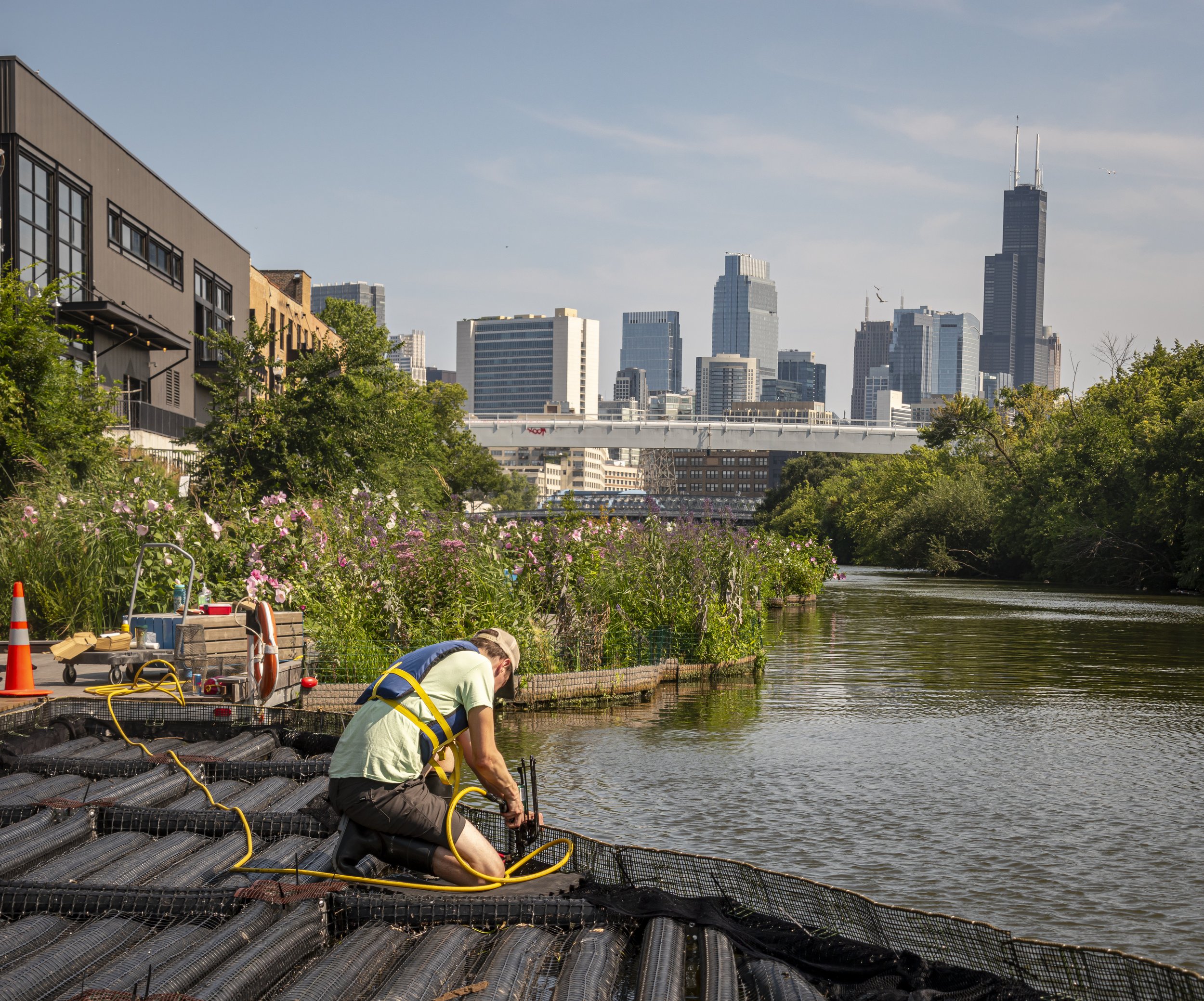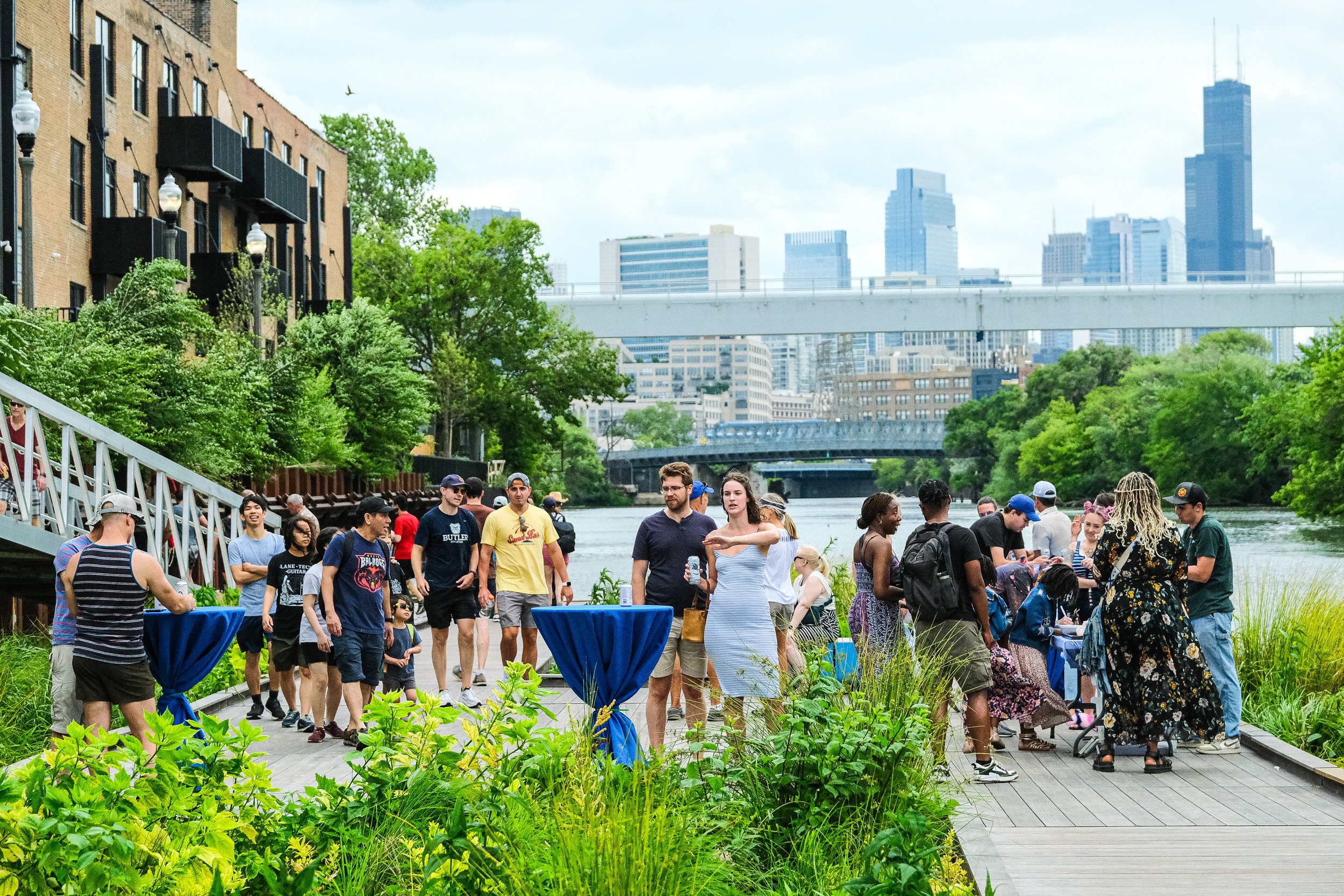
Wild Mile Chicago
The World’s First Ever Floating Eco-Park














The Wild Mile is the flagship project of nonprofit Urban Rivers. This floating ecopark takes a wildlife-first approach to public greenspace.
What’s the Wild Mile?
The Wild Mile is the result of years of collaboration between community groups, architects, scientists, and the City of Chicago.
History
Construction
Phase 1 of the Wild Mile was installed in 2021, and opened to the public in 2022. Phase 2 was completed over the summer of 2024, and added an additional 300 linear feet to the existing 400.



